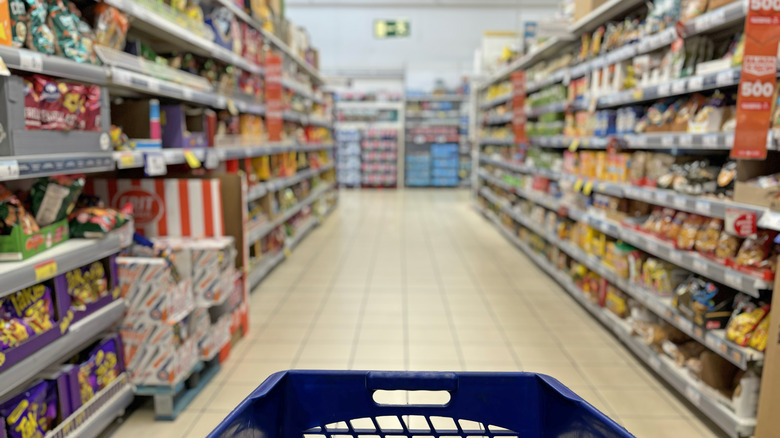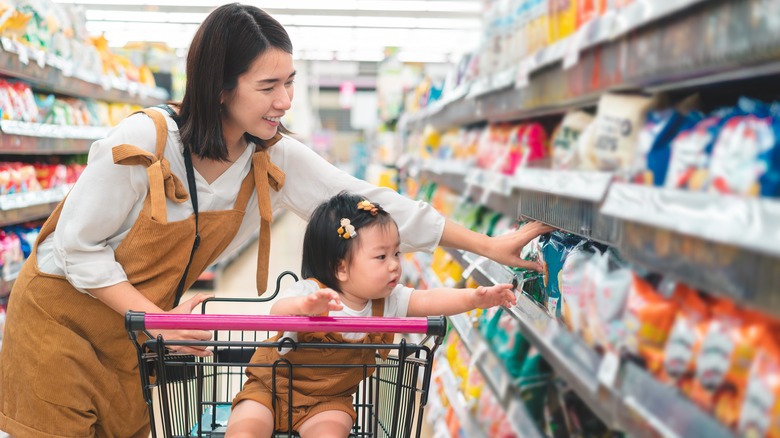There's A Reason Certain Products Are Eye-Level At Grocery Stores
We've all been there: You have a grocery list in hand and decide to make a "quick" stop at the store to grab the needed items on your way home from work. Fast forward an hour, and you've spent much more than you planned, on way more stuff than you needed. Making a shopping list is smart, but, unfortunately, store merchandisers are smarter, and one simple technique they use tricks us every time: They place premium items at eye level.
The term "eye level is buy level" is well known in the grocery business, and for good reason. Items placed at eye level, or approximately 4 to 5 feet from the floor, simply get more attention from shoppers. Meanwhile, in a study in the Journal of Marketing Research using in-store eye-tracking technology, researchers found that shoppers are more inclined to purchase items that are just below eye level — specifically, 14.7 inches below, so between eye and chest level.
Retailers know that placement matters and charge accordingly for this real estate. This is why product manufacturers spend serious marketing dollars to secure shelf placement at this level. As a result, you're likely to see premium (read: expensive) brands on these shelves, which many shoppers simply grab out of convenience. Choosing the first items we see in our haste to finish shopping is just one of the many mistakes we make when grocery shopping. One Bangor University study showed that this behavior starts after around 40 minutes, meaning you'll want to have a gameplan for that after-work shopping trip to avoid too many unintentional purchases.
Be a savvy shopper with merchandising knowledge
There are a few things to keep in mind to stay focused on your list and abide by your budget: First, grocery aisles are designed to be long, so it seems there's a never-ending stream of products flashing before your eyes. Keep your eyes focused on your goal (the items on your list). Knowing that the more expensive brands are likely to be at eye level means that you might have to look up high or crouch down low to find the lower-priced options. This is where you're likely to find store brands or generics.
Also, remember that the "eye-level" principle applies to kids, too. In other words, many of the toys and snack foods created to appeal to kids are placed on lower shelves, at about 3 to 4 feet from the ground, also known as "touch level." This is one of the effective strategies for marketing to children; after all, if your child sees a box of cereal that appeals to them, with a character they like who's looking right at them, or a brand that they've seen advertised on television, they might just grab it and toss it in the cart (via IJERPH). And if you make it all the way to the register, you might feel that it's too late for you to say no.
Now that you're armed with this retail knowledge, remember to stick to your list, be alert to the tactics stores use, choose the right times to do your grocery shopping, and keep your eyes on the top and bottom shelves. Your bank account will thank you.

